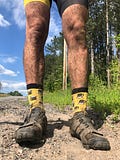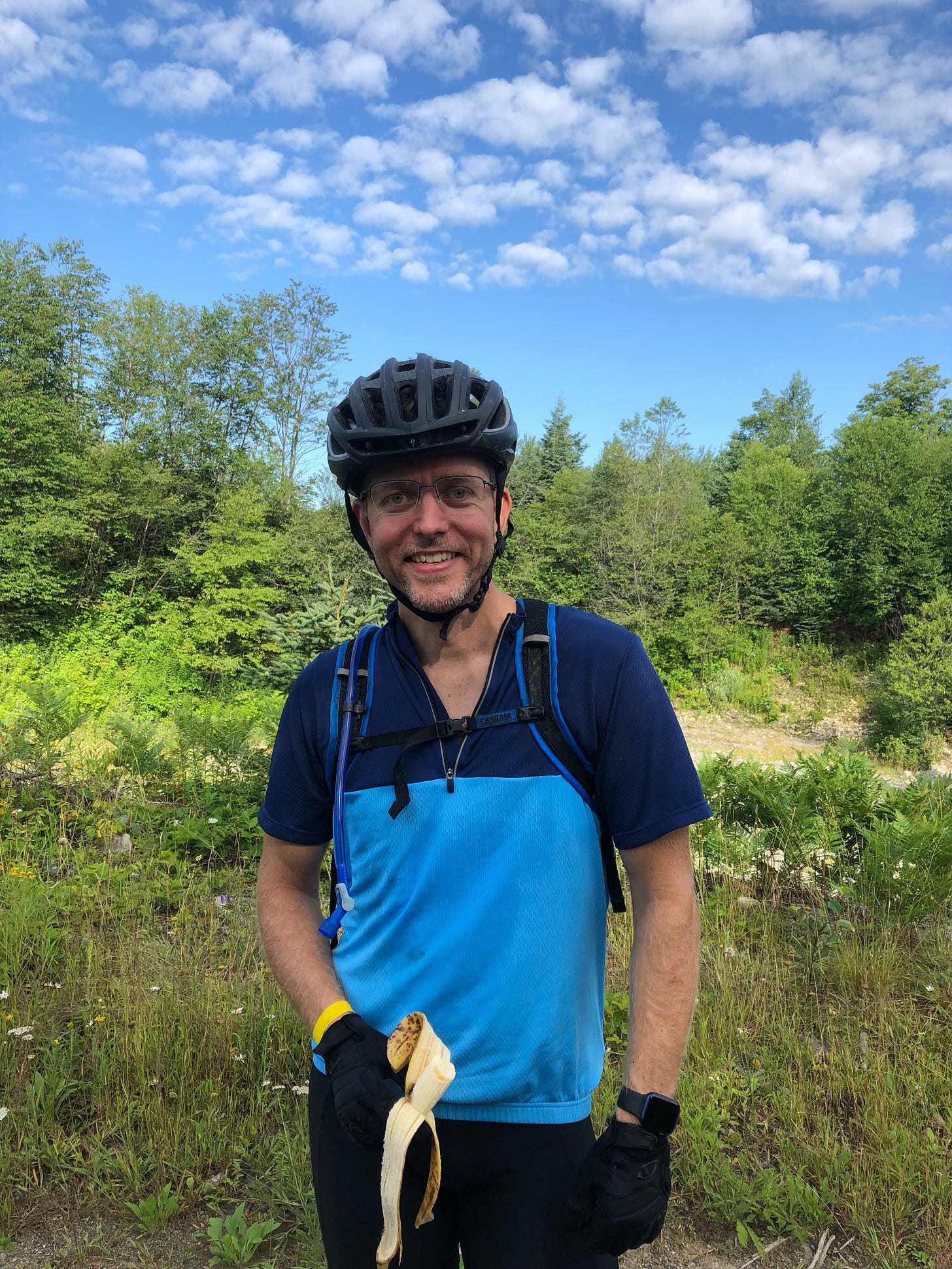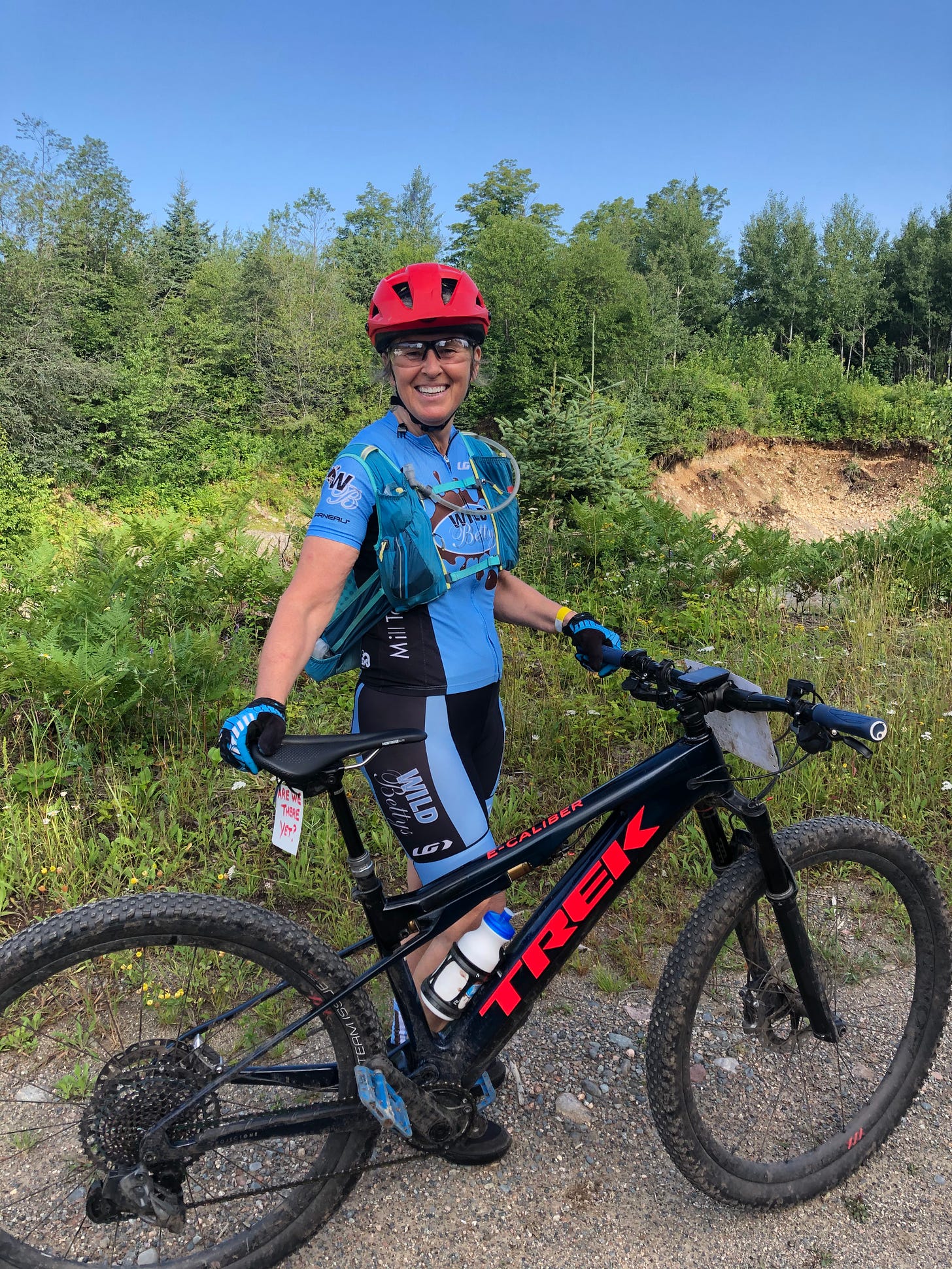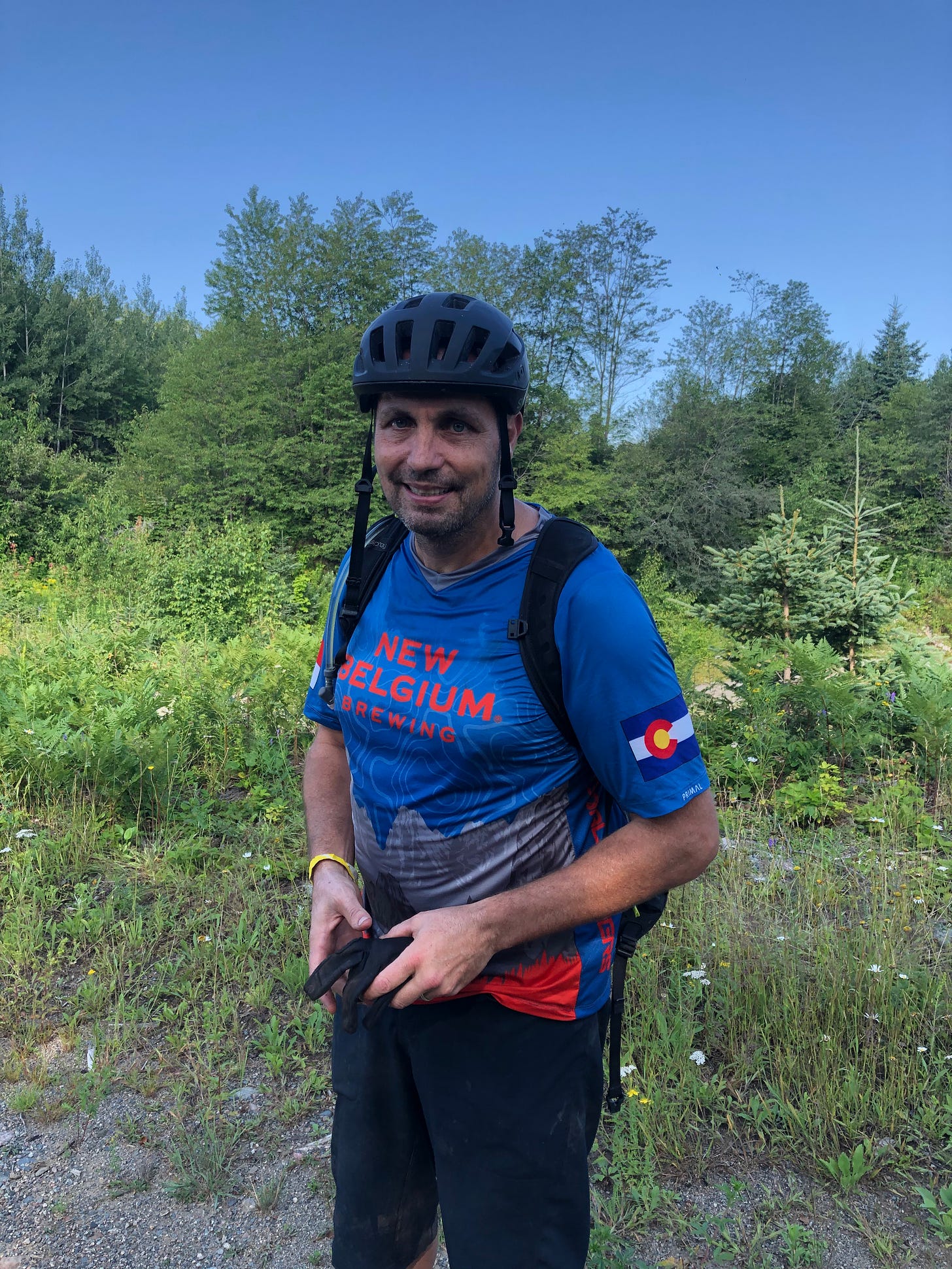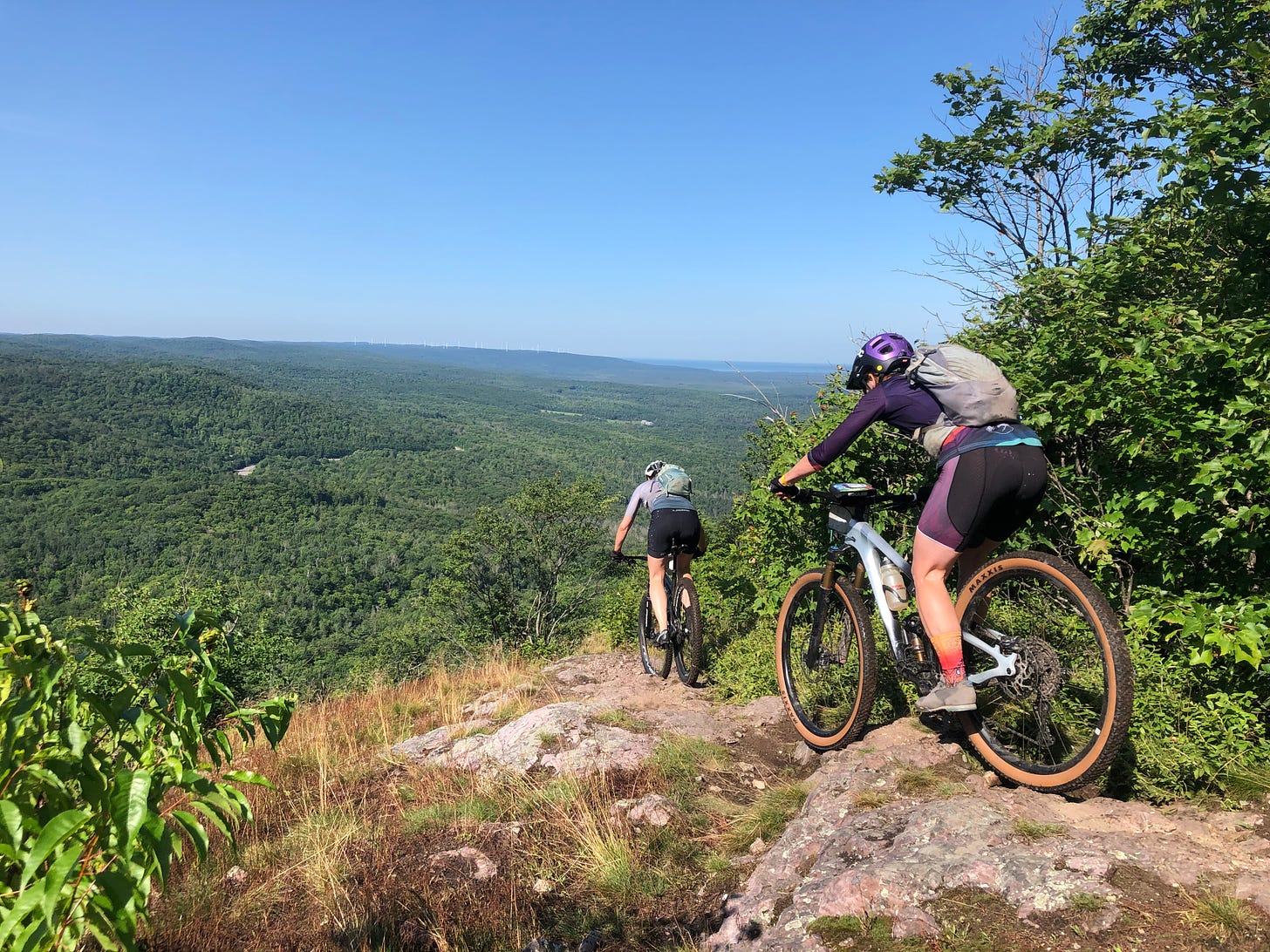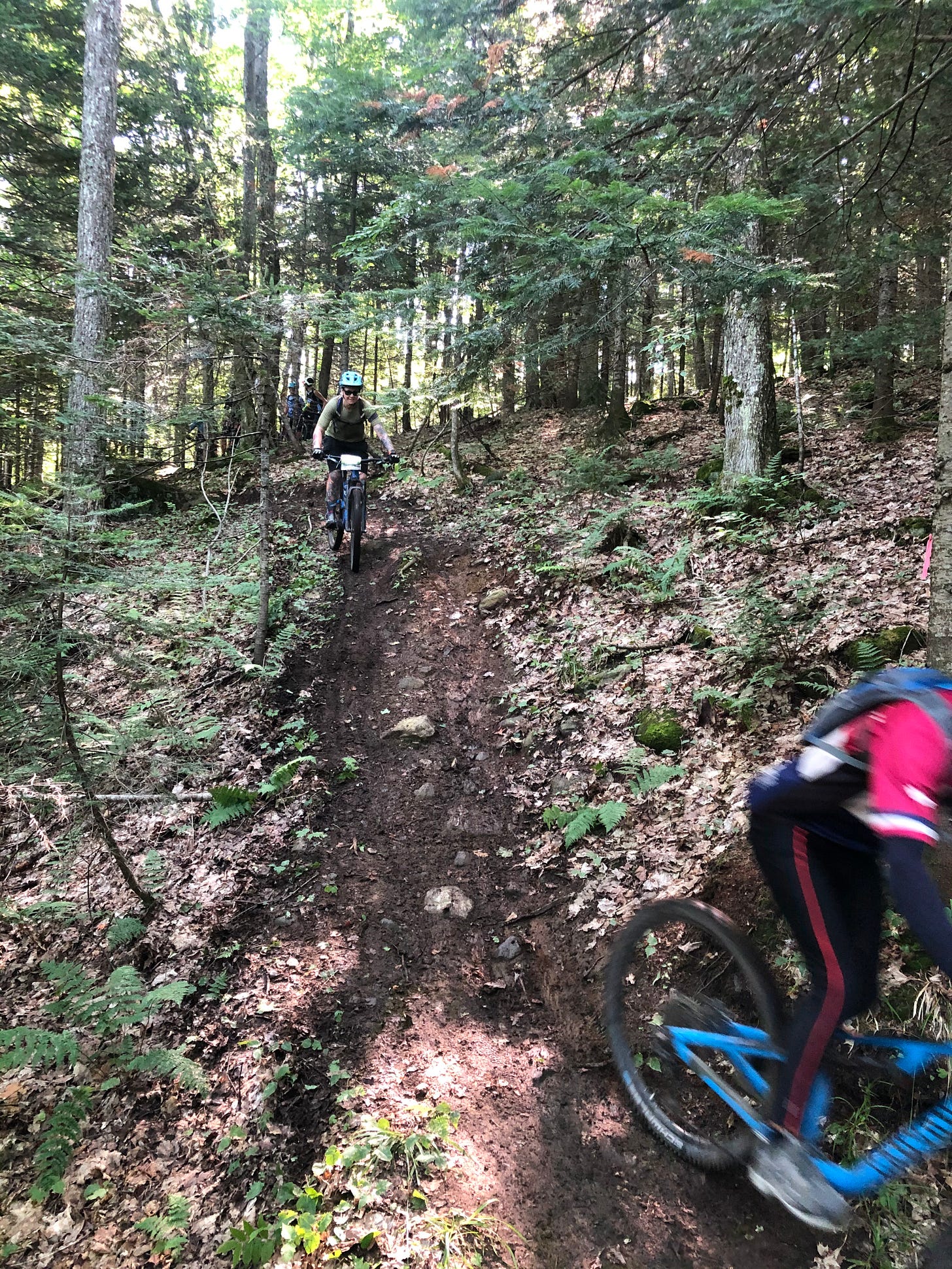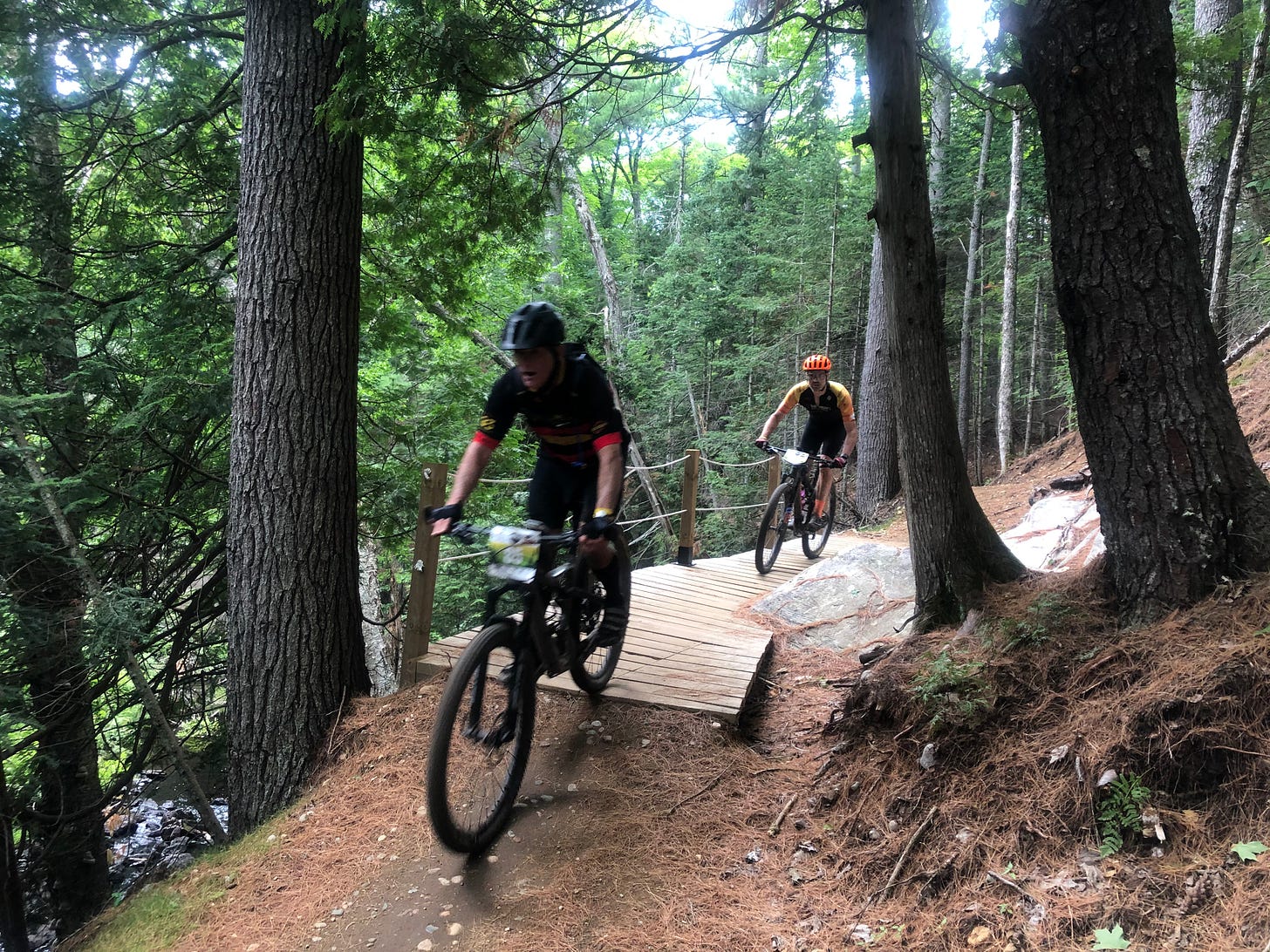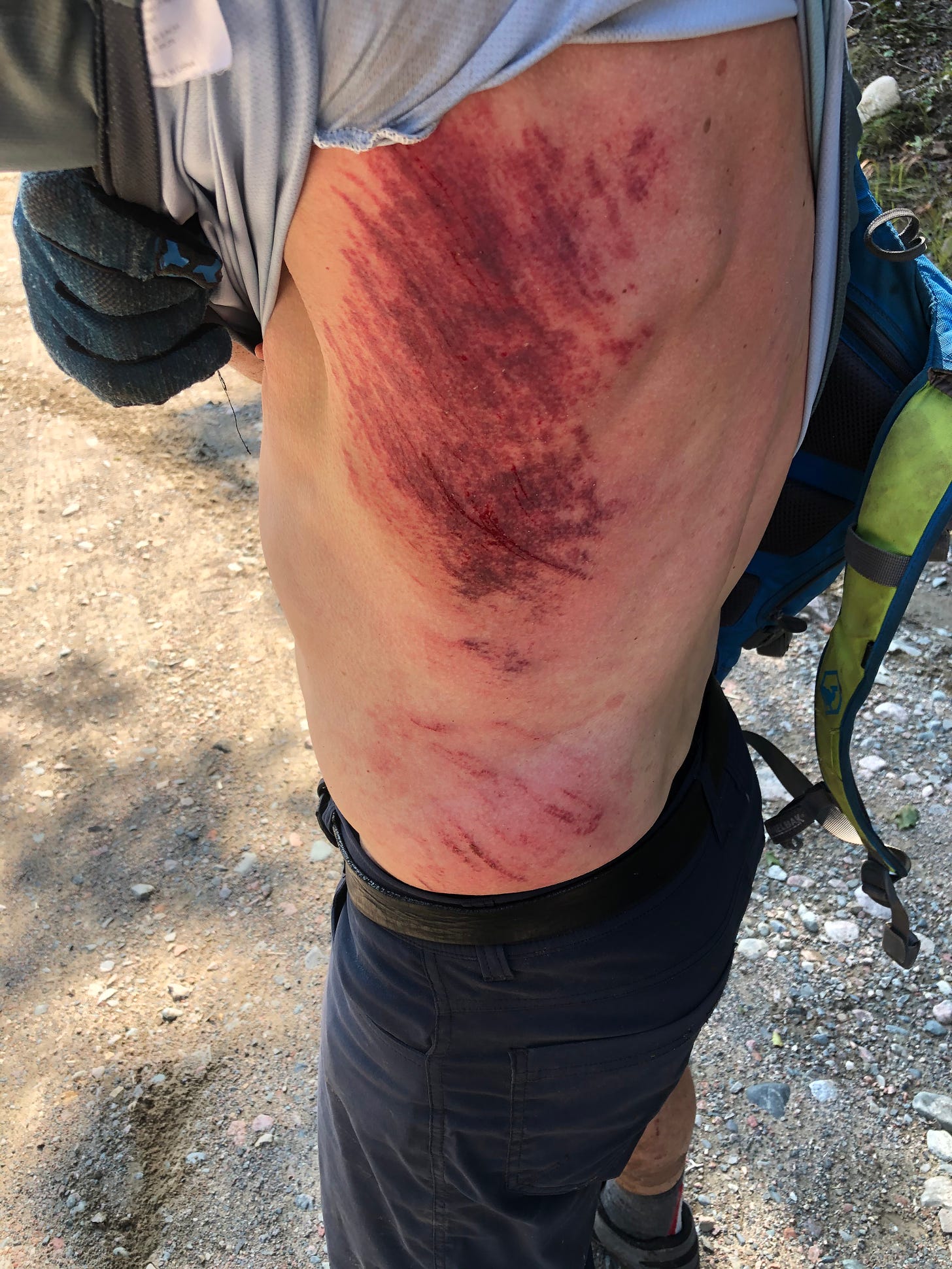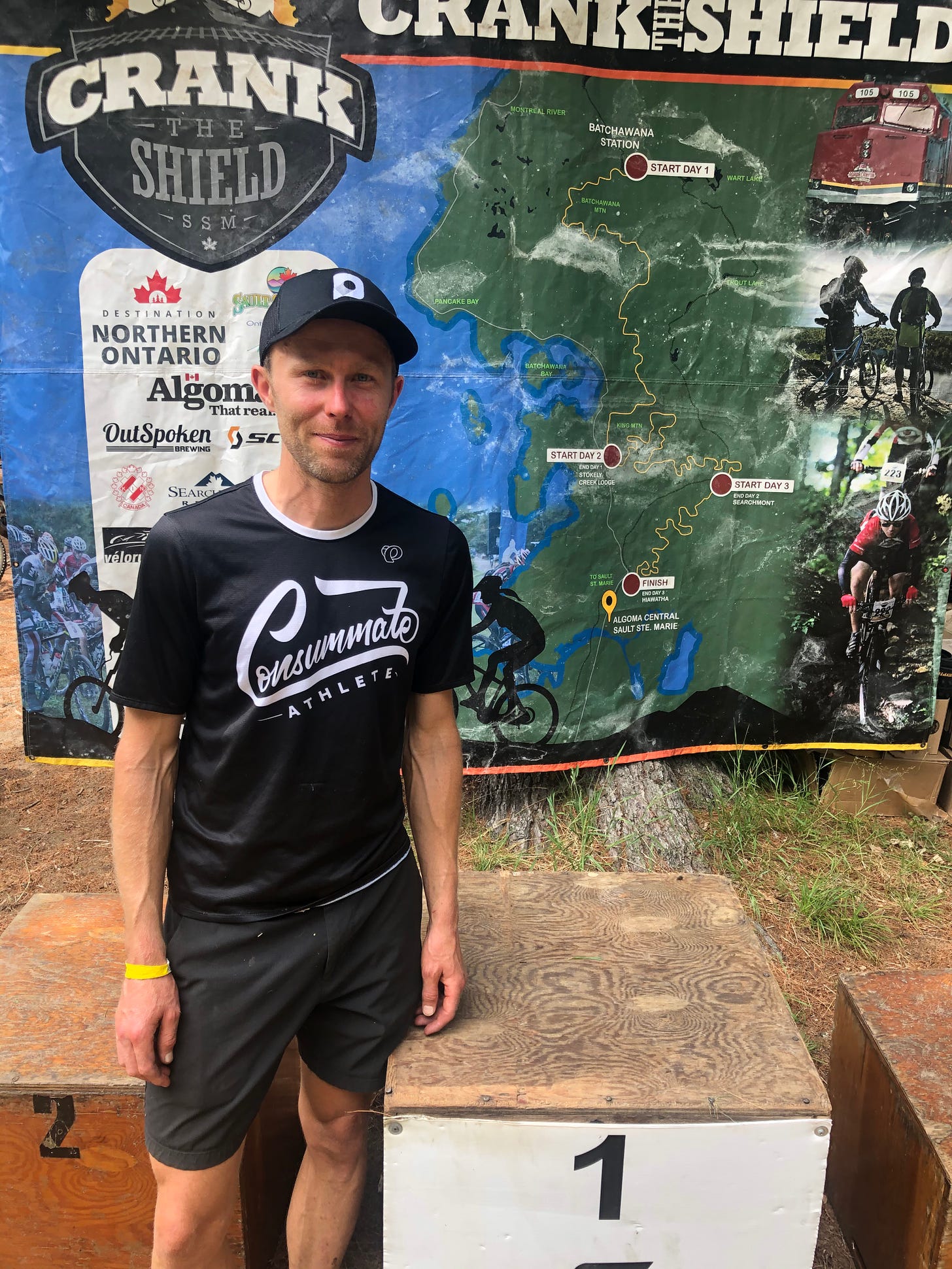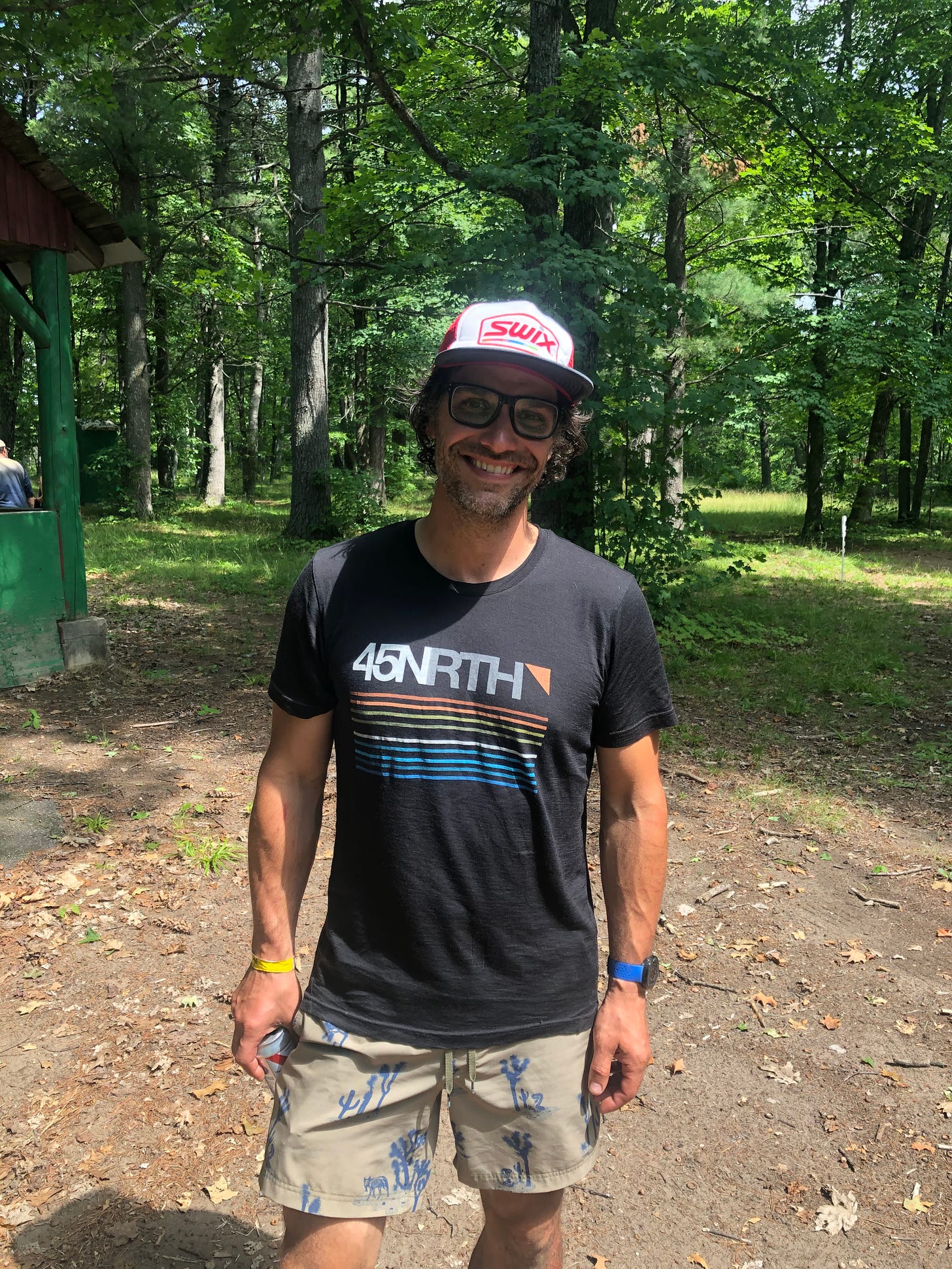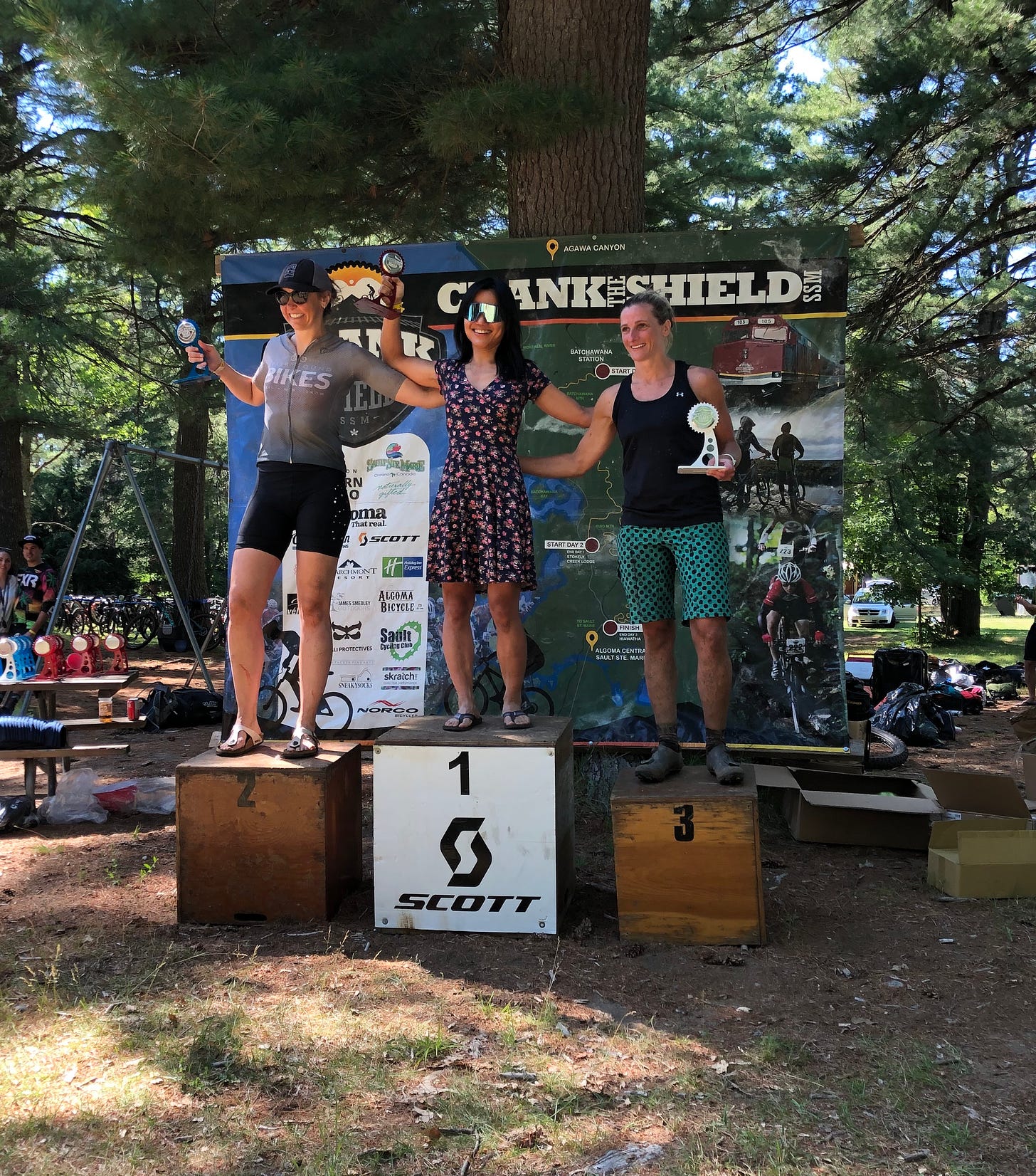Note: This post is longer than usual, so it’s best to open the full version on the Substack site (as it will likely be ‘clipped’ in your email).
One of the most positive stories coming out of Sault Ste. Marie right now is its bustling cycling scene, complemented by a sprawling system of new mountain bike trails.
Already featuring some of the best terrain in the country, the city is now putting itself on the map as a prime tourist destination for cyclists.
The recent additions to the Hiawatha Highlands trail system and ongoing trail project at Finn Hill mean that Sault Ste. Marie will be punching well above its weight for decades to come.
Keen to capitalize on its natural competitive advantages, the city has been aggressively pursuing a rebranding campaign, one aimed at the young and adventurous.
Cyclists will have noticed the city’s charm offensive in the pages of a prominent cycling publications recently, further spreading the good word.
It’s a long term strategy, but one that’s already starting to pay off.
Over the past few years, local trails have attracted the attention of a stage race called Crank the Shield.
Although it’s on hiatus this year, the three-day event has consistently brought cyclists from far and wide to showcase everything Sault Ste. Marie (and area) has to offer.
Stage races like Crank the Shield are true to their name, featuring multiple days in the saddle.
Although they’re known for their gruelling nature, they manage to attract both seasoned veterans and relative newcomers. It’s billed as a ‘race,’ but completing the full three days is the real challenge.
As an avid cyclist, it’s been on my bucket list for a long time.
Alas, life kept intervening to make a three-day, two-wheeled odyssey too ambitious.
But last summer was (slightly) different.
I wasn’t able to disappear for three days, but I did manage to ride the third and final stage, enjoying some challenging Northern Ontario backcountry and a glorious entry into the Hiawatha Highlands trail system.
While at the starting line for stage three, I had the opportunity to connect with several people that found their way to Sault Ste. Marie for the epic adventure.
Michael Bashford came from Quadeville, a small hamlet west of Ottawa.
Although he spent some of his childhood on a bike, it’s only in the past couple years that he’s been drawn to mountain biking.
After completing his first stage race the previous year in Quebec, he “absolutely fell in love with that type of racing” and was on the hunt for another stage race that was within driving range.
He was keen to test his strength and ability before another major race in Quebec.
He found the first two stages of Crank the Shield daunting and sometimes annoying, despite the adventure and scenery.
Preferring trails with flow, jumps, and drops, the backcountry gravel and weather-induced mud weren’t exactly his favourite. Having ridden the trails of the Hiawatha Highlands more times than I can remember, I knew that he’d be ending stage three with a smile.
Similar to others with whom I spoke, the event marked his first visit to the city (having only driven through it previously) and he had pre and post-race plans for exploring the area.
Melinda Davie hails from Toronto but lives slightly north in Mono lately.
She’s the driving force behind the Wild Bettys, a popular female-oriented mountain bike club in Southern Ontario. A group of eight Wild Bettys made their way to Crank the Shield, spending an entire week in the area.
Melinda’s been an avid cyclist for two decades and thirteen of those years have revolved around organizing the Wild Bettys. She’s done several stage races before but it’s her first year at Crank the Shield. “They’re all hard,” she tells me.
“And when you finish each day, you think it couldn't get harder. And yet it does. It just keeps getting harder.”
The first stage was “terrific” but mother nature intervening with heavy rain on the second stage made it a rough slog through the mud.
Overall, she thinks the trails around Sault Ste. Marie are “world class.”
Andrew MacLeod is originally from Georgetown but traveled from Colorado for Crank the Shield.
Two of his friends from high school made a pitch for the trip and he “just instantly said ‘I’m in.’”
He’s cycled for most of his life, fondly remembering his parents’ purchase of a mountain bike for him at a relatively young age.
The race marked the first time he’d been to the area in around four decades, only once passing through the city during a cross-Canada family trip.
He described the previous stage as “challenging,” “ridiculous,” and “crazy hard.”
Nonetheless, the “absolutely stunning scenery” along the way made it well worth the effort.
Stage three of Crank the Shield begins with a ‘neutral’ roll through the Goulais River area until it meets its first challenge: a massive climb up a winding gravel road to the top of the Bellevue Valley.
From the top, riders are treated to one of the best views of the race before descending into one of the area’s most famous and challenging trails.
Affectionately know as ‘Bee Sting,’ the Bellevue Valley descent is fast and sometimes technical, mixing dirt berms, wooden bridges, and some rocky patches.
It’s the type of trail that deserves a chairlift, and it’s easily one of the best in Northern Ontario (if not the best).
Unfortunately, what goes down must go up (again).
Except this time, riders climb Bellevue Valley on the pavement and then enter the backroads, slowly making their way towards the Hiawatha Highlands.
From there, riders are on a mix of gravel roads and some backcountry trails that usually see ATVs.
That means that you might not always be on your bike.
Mounting and dismounting is required through this section of the stage, and there’s enough mud to get stuck in some sections.
Eventually, riders enter the Farmer Lake area where some new and very impressive trails have been built. Stage three ends with a tour of the finest sections of the Hiawatha Highlands (also known as Kinsman Park).
With steep descents, high speeds, and challenging terrain, some bad luck is expected.
One of my trail-mates (who shall remain nameless) experienced some of that bad luck, getting pitched on a rocky and steep descent through the backroads.
They licked their wounds afterwards with a good story for the beer tent. As far as I could tell, no other serious injuries were reported that day.
Throughout the course, riders can avail themselves of aid stations, where drinks and snacks provide much needed fuel.
When the trails require effort and morale feels low, seeing an aid station up ahead is the equivalent of finding an oasis in the middle of the desert.
Peter Glassford has completed Crank the Shield on multiple occasions across Ontario, someone you might consider a veteran of the event.
He says that because of his occasional visits, he’s well-acquainted with the downtown and local restaurants.
The trails around Sault Ste. Marie “just keep getting better,” according to Peter.
He has high praise for the Hiawatha Highlands where the trail “are just so good” and even “spectacular.” He says it’s a place where different parts of Ontario terrain are seemingly combined in one area, featuring challenging rocky terrain, high speed and technical trails, and machine-built sections with flow.
Peter would know.
He’s a former elite-level racer that’s traveled around the world, but now makes a living by cycling on a different route: training others to meet their goals.
He came to the event with some of his clients who trained specifically for the event. Another motivating factor for the group was the fact that the race has an ‘e-bike’ category, one of only a few races across Ontario offering that option.
Peter’s skills took him to the top of the podium.
Having seen some of Canada’s other stage races at famed locales in British Columbia and Quebec, he said “sometimes it’s nice to go to a place that’s quiet.” He also appreciated the assortment of breweries and hotels around town.
Jan Roubal is a familiar face in the local cycling scene.
He’s the owner of Vélorution, the largest bike shop in town, and one that’s recently relocated about as close as one can get to the trails at the Hiawatha Highlands.
An accomplished cyclist himself, his feats have been the subject of headlines before.
This year’s edition of Crank the Shield is another feather in his cap, with a second place overall finish.
As a shop owner, he says he tries “to support the bike and ski communities as best as we can here in the Sault.”
The first two days were beset by some challenging weather but the final day was great in ending with “some of the better single track in Ontario.”
When asked why events like Crank the Shield are important, he said “it’s great to expose people to the trails that we have here, the kind of adventure that we can have in our backyard.”
An added benefit is the spin off for local tourism, drawing in new people from Canada and around the world.
Feedback on the trail system has been universally positive. “Everybody that comes the first time says they’re coming back again,” he says. And the major reason for that is the “top notch” trails.
Three days in the saddle over gruelling terrain may not be everyone’s idea of a good time.
But with great challenge comes great reward, said Melinda: “It’s hard, but it feels so good to achieve it. And it’s just so character building, right? Like on every level, the physical and mental, and the preparation beforehand.”
For a race like Crank the Shield, some training and preparation is key.
Andrew had some good advice for the curious: “Prepare by biking a lot of rooty trails and climb a lot. Climb a lot, okay?”
Jan believed that “anybody can get through it” with a bit of persistence. “You might be out there longer than some other people. But moving forward gets you through just about anything.”
Peter conceded that the race is “very hard” but tended to emphasize the lively atmosphere over the struggle in the saddle.
A stage race like Crank the Shield is akin to “summer camp for adults,” according to him.
For those daunted by a potentially painful three days, worry not.
The good news is that when the race and racers disappear, the trails are still there.
Luckily for Sault Ste. Marie, our backyard now includes some of the best trails you’ll find anywhere.

